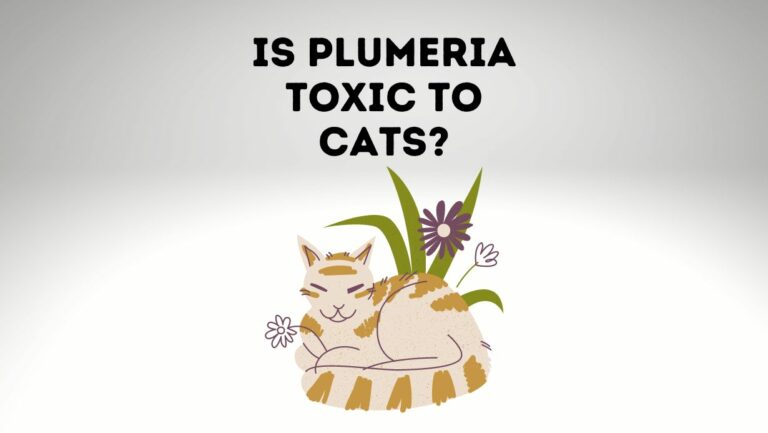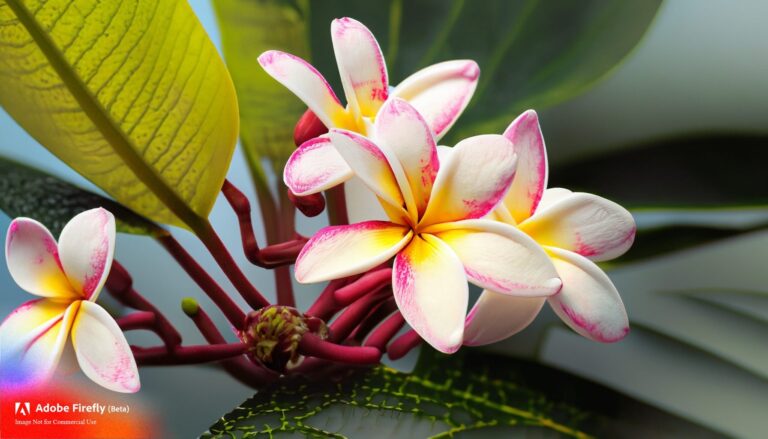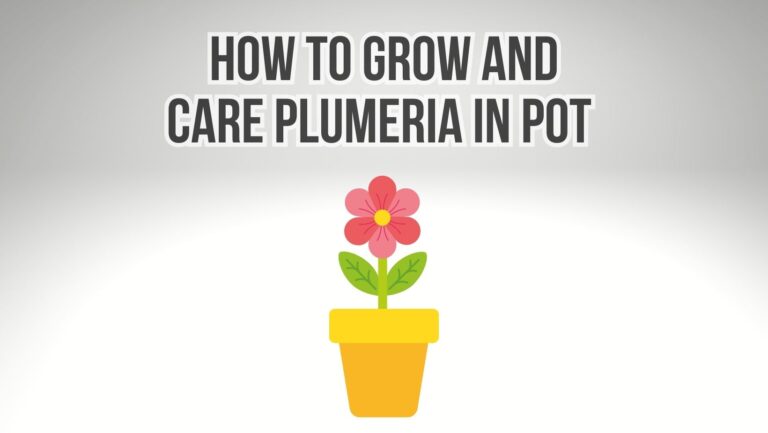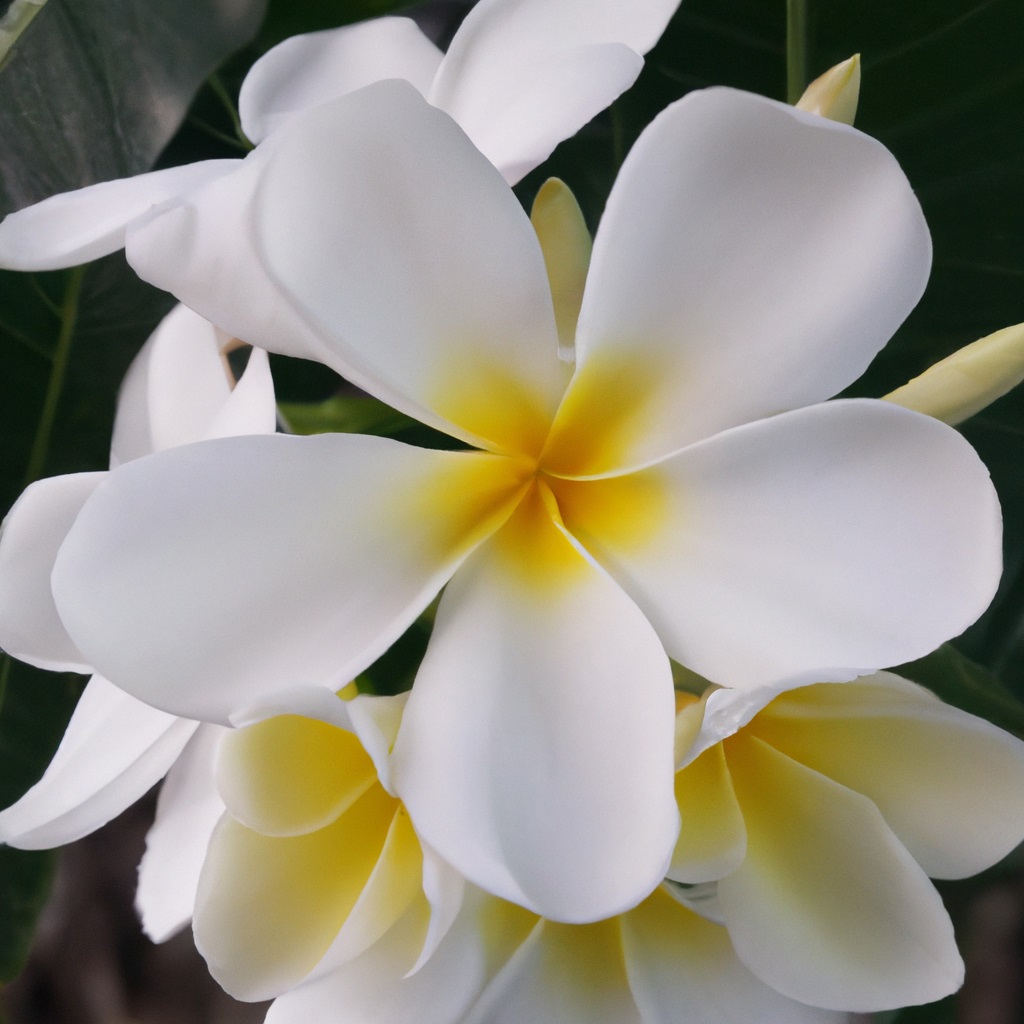
Plumeria (commonly known as Frangipani) is a genus of flowering plants in the family Apocynaceae. They are native to Central America, Mexico, the Caribbean, and South America. Plumeria species are also found in the Pacific Islands, India, Sri Lanka, Africa, and Madagascar. The flowers of Plumeria are typically large and fragrant.
The most popular plumeria colors are white and yellow, but they can also be pink, red, or purple. Plumeria plants can be either evergreen or deciduous, depending on the species. Evergreen plumeria varieties retain their leaves year-round, while deciduous types lose their leaves during the dry season.
Plumeria are generally low-maintenance plants that require little care once they are established. So, is plumeria a succulent or flower? The answer is both!
What Are the Different Types of Plumeria?
There are over 300 types of plumeria, and they can be divided into a few different categories.
The most common type is the P. rubra, which has red flowers.
Other popular types include the P. alba, which has white flowers, and the P. x stenopetala, which has yellow flowers.
One of the less common types is the P. lutea, which has orange flowers. This type is not as popular because it is more difficult to grow.
Finally, there are the hybrids, which are created when two different types of plumeria are cross-bred. These can have any combination of colors, depending on the parents.
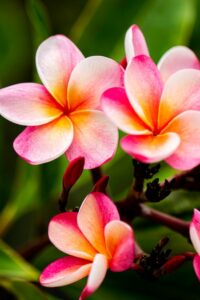
What family is plumeria in?
The plumeria is a flowering plant in the genus Plumeria. The genus comprises about 7-8 species of deciduous or evergreen shrubs, small trees, and climbers native to tropical and subtropical regions of Mexico, Central America, the Caribbean and South America.
The plumeria is a member of the Apocynaceae family, which also includes plants such as oleanders (Nerium oleander) and periwinkles (Vinca minor).
The plumeria is a popular plant in many tropical and subtropical regions, and its fragrant flowers are often used in leis or other forms of floral arrangements.
Is plumeria a succulent?
Plumeria (common name frangipani) is a genus of flowering plants in the family Apocynaceae. They are native to tropical and subtropical regions of Central America, the Caribbean, and South America.
Plumeria flowers are most fragrant at night in order to lure sphinx moths to pollinate them. The flowers yield no nectar, however, and simply trick the moths into spreading pollen while they feed on the plant’s sap. Plumeria also features prominently in Polynesian legends and mythology.
The term “succulent” describes a plant that has thick, fleshy leaves or stems that store water. This type of plant is adapted to living in dry conditions or periods of drought. While plumeria is not technically a succulent, it is often grown as one because it is tolerant of dry conditions and can be easily propagated from cuttings.
Is plumeria a complete flower?
Plumeria is a flowering plant in the genus Plumeria, which contains about 200 species. The most common plumeria species is Plumeria rubra, which is native to Mexico, Central America, and the Caribbean. Plumeria rubra is a small tree that grows to about 10 feet tall. Its flowers are white with a yellow center and have a strong fragrance.
Other plumeria species include Plumeria pudica, which is native to South America, and Plumeria obtusa, which is native to Southeast Asia. Both of these species have similar growth habits and flower colors to P. rubra.
Plumeria flowers are used in leis and other floral arrangements in Hawaii and other Polynesian cultures. In Hawaii, the flowers are known as Frangipani. In Thailand, they are called Doi Suthep.
Plumeria plants can be propagated from seed or cuttings. Cuttings are usually taken from the tips of branches that have not flowered yet. The cuttings are then planted in soil or sand and kept moist until they root.
What type of flower is plumeria?
Plumeria (also called frangipani) is a genus of flowering plants in the family Apocynaceae. The genus consists of about seven hundred species, native to warm climates throughout the world. Plumeria flowers are most commonly white or pink, although some varieties can be red, yellow, or orange.
Plumerias are not succulents, but they are often mistaken for them because of their similarities in appearance. Like succulents, plumeria have thick, fleshy leaves that retain water well. However, while succulents store water in their leaves to survive drought conditions, plumeria use their fleshy leaves to hold moisture during periods of high humidity and rain.
Although they are not related botanically, plumeria are sometimes confused with another group of plants known as cacti. This is likely due to the fact that both groups of plants grow in desert-like conditions and have similar physical features. However, cacti are actually succulents and belong to a different plant family altogether.
What is special about plumeria?
Plumeria is a plant that produces beautiful flowers. The flowers are very fragrant and have a strong aroma. They are often used in leis, or as decoration for Hawaiian shirts. Plumeria flowers come in many colors, including white, pink, yellow, and red.
What makes plumeria so special is its ability to thrive in harsh conditions. This tough little plant can withstand high winds and salt spray without damage. It is also drought resistant and can survive long periods without water. As a result, plumeria is a popular choice for landscaping in areas that are prone to hurricanes or other natural disasters.
Where Does Plumeria Come From?
Plumeria is a flowering plant that is native to tropical regions of Central America, South America, and the Caribbean. The flowers are typically white or yellow, with some varieties having pink or red flowers. The plants can grow to be quite large, with some reaching heights of 30 feet or more. Plumeria are often used in leis or as ornamental plants in gardens.
What Are the Benefits of Plumeria?
There are many benefits of plumeria, including its beautiful flowers and its easy care.
Plumeria is a popular choice for landscaping and gardens because it is low maintenance and drought tolerant.
The flowers are also used in leis and other Hawaiian crafts.
Plumeria is also known for its soothing, sweet scent. Flowers are often used in perfume and aromatherapy.
The Plumeria flowers can also be used to make tea.
Plumeria is also believed to have medicinal properties. Flowers and leaves are used in traditional medicine to treat a variety of conditions, including fever, diarrhoea, and skin infections.
Where is the best place to plant plumeria?
Plumeria is a tropical plant that thrives in hot, humid climates. It is often grown as a houseplant in cooler climates but can be difficult to keep alive indoors.
The best place to plant plumeria is in a location that gets full sun and has well-drained soil.
Plumeria does not like wet feet, so make sure the area you choose does not stay soggy after rain.
If you live in an area with cold winters, it is best to plant plumeria in a pot so you can bring it indoors when the weather turns cold.
How to Care for Plumeria
Plumeria is beautiful, fragrant flowers that are popular in leis and other tropical arrangements. While they may look delicate, Plumeria is actually quite tough and easy to care for. Here are some tips on how to keep your Plumeria healthy and blooming:
-Choose a sunny spot in your garden for planting. Plumeria does best in full sun.
-Water regularly, but do not over-water. Plumeria like their soil to be moist but not soggy. Be especially careful not to over-water during the winter months when the plants are dormant.
-Fertilize every few weeks during the growing season with a balanced fertilizer designed for flowering plants. You can reduce fertilizing to once a month during the winter months.
-Prune your Plumeria as needed to shape it or remove damaged or dead branches. Pruning will also encourage new growth and more flowers.
-If your Plumeria is kept indoors, place it near a sunny window. You may need to rotate the plant every few days so that all sides get equal sun exposure.
-Bring your Plumeria outdoors during the summer months. They will benefit from the extra sunlight and fresh air.
With just a little care, your Plumeria will thrive and provide you with beautiful blooms for many years to come.
Conclusion
As you can see, plumeria can be both a succulent and a flower. It all depends on the type of plumeria that you have. If you’re not sure which one you have, it’s best to ask a professional or do some research online.
Either way, plumeria make beautiful plants that are perfect for adding a touch of colour to any home or garden.


